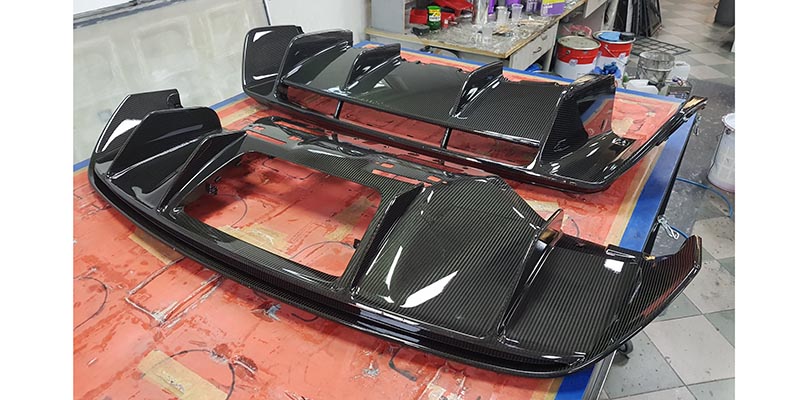Carbon fiber molding is a critical technology in modern automotive manufacturing, primarily used to produce lightweight, high-strength components. Carbon fiber–reinforced polymer (CFRP) composites offer an excellent strength-to-weight ratio, corrosion resistance, and design flexibility, making them highly desirable for both high-performance sports cars and increasingly for mass-market vehicles seeking improved fuel efficiency and reduced emissions.
What is Carbon Fiber?
Carbon fiber is a material composed of thin, strong crystalline filaments of carbon. These fibers are typically woven into a fabric and combined with a resin to form a composite material. In automotive applications, this composite is molded into parts such as body panels, monocoques, interior trims, and structural reinforcements.
Molding Processes in Automotive Applications
Resin Transfer Molding (RTM)
A common method in automotive production.
Dry carbon fiber fabric is placed into a mold, and resin is injected under pressure.
Benefits: Good surface finish, high strength, and moderate cycle times.
Used for: Body panels, structural components.
Compression Molding
Prepreg (pre-impregnated with resin) carbon fiber is placed in a heated mold and compressed.
Shorter production times and good dimensional accuracy.
Used for: Small to medium production runs, structural parts.
Autoclave Molding
Prepreg materials are laid in molds and cured in an autoclave under heat and pressure.
Offers the highest quality and strength.
Used for: High-performance and luxury vehicle components like monocoques (e.g., McLaren, Ferrari).
Vacuum Bag Molding
A lower-cost, lower-pressure alternative to autoclaving.
Suitable for prototyping and low-volume parts.
Vacuum draws air out of the mold while the resin cures.
Advantages of Carbon Fiber in Automotive Manufacturing
Lightweight: Up to 50% lighter than steel, aiding in improved fuel economy and performance.
High Strength and Stiffness: Excellent structural properties for safety and performance.
Corrosion Resistance: Increases component longevity.
Aesthetic Appeal: Woven fiber patterns are visually striking and used in interior and exterior trims.
Challenges and Limitations
Cost: Carbon fiber is significantly more expensive than traditional materials like steel or aluminum.
Production Time: Some molding processes, especially autoclave curing, are time-intensive.
Recyclability: Composite materials are harder to recycle than metals, posing sustainability concerns.
Repair Difficulty: Carbon fiber structures can be harder to repair after damage.
Applications in Vehicles
Structural Components: Chassis, monocoque frames.
Body Panels: Hoods, roofs, spoilers, fenders.
Interior Parts: Dashboard trims, seat backs.
Performance Parts: Driveshafts, suspension arms, aerodynamic components.
Future Trends
Mass Production Advances: Automated fiber placement (AFP) and faster RTM cycles are making carbon fiber more feasible for high-volume manufacturing.
Hybrid Materials: Combining carbon fiber with other composites or metals to balance cost and performance.
Sustainability Efforts: Development of recyclable thermoplastic carbon fiber composites.
Conclusion
Carbon fiber molding is revolutionizing the automotive industry by enabling lighter, stronger, and more efficient vehicles. While cost and scalability remain challenges, ongoing innovations are pushing carbon fiber composites from niche high-performance applications into broader adoption across the automotive market.


